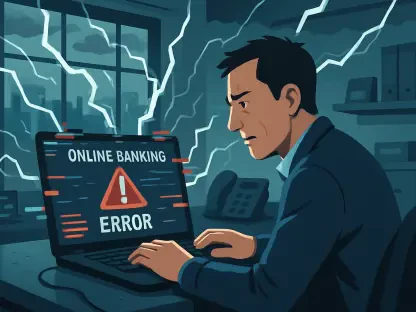Listen to the Article
Five years after its introduction, new research shows that many consumers still don’t fully understand the concept of open banking, or “open bank data.” Initially introduced through legislation in 2018, the concept of open finance has now expanded globally. However, a UK study discovered that 58% of respondents did not know how this method operates, while data security skepticism persists as 84% of people feel unsafe using it.
Furthermore, research indicates that consumers prioritize three main expectations regarding this service:
Fast and easy transactions;
Greater convenience when accessing banking services;
Access to multiple services through banking apps;
Until security issues persist, public opinion is unlikely to shift, preventing the concept from reaching its full potential. Despite these numbers, open banking is now entering an exciting phase, driven by technological advancements and regulatory changes that promise to unlock new opportunities for both individuals and businesses. This article investigates seven essential trends that will shape the sector in 2025, from changing billing methods to new financial sector regulations.
Faster, Smarter Deals with Open Banking
UK national payment system structures and other international platforms are already voluntarily integrating open banking. As part of the UK’s National Payments Vision 2025, this will help businesses develop faster, safer, and more accessible frameworks.
B2B enterprises have a chance to increase operational efficiency, speed up transaction processing, and create better cash flow management. Last but not least, a reduction in administrative burden and the ability to concentrate more on growth is no small feat.
In 2023, the UK’s Faster Payments Service handled 4.9 billion charges, which represented 10% of total UK transactions. This year, the system will expand to provide quick processing abilities to commercial organizations and basic instant money transfer solutions for users.
The main benefits for consumers using real-time, electronic payment solutions are flexibility and control. On the other hand, better cash flow management empowers companies to deliver more sophisticated experiences for customers.
A Game-Changer for B2B Customer Relationships
Open banking provides clients with secure access to monetary data, aiding in better decision-making and expanding patrons’ access to savings, investments, pensions, mortgages, and insurance products. It allows B2B companies to make optimal decisions, manage risks, and offer personalized solutions, leading to improved outcomes for all stakeholders.
Why does this matter? First of all, people want to get complete visibility into their entire financial situation, and banks can do that through open finance programs. In such a system, every account exists under a single platform for easy user access, giving them an easier way to monitor their advancement toward retirement and homeownership goals.
How do businesses benefit from this trend? Here is a list of advantages for your enterprise when you implement procedures rooted in open finance:
Reach More Customers: Looking at cash flow and transaction data will help you spot people who are creditworthy but usually get missed by regular checks, opening the door to new customers your competitors might not see.
Build Stronger Relationships: Clients value lenders who understand their financial situation, not just their credit history. When you provide personalized fiscal products that fit their needs, you create trust and loyalty, keeping patrons with you for years.
Lower Default Risk: By looking at real-time shopping behaviors, you can see the difference between financially stable people with non-traditional incomes and those who are a real risk.
Improve Reputation and Compliance: Regulators want lending institutions to promote inclusion. By improving access to finance, you can build a good reputation with both customers and regulators, which can help reduce compliance issues.
The Power of Variable Recurring Payments
Next-generation monetary plans will introduce numerous options that adapt to consumer business requirements. Thanks to variable recurring payments systems, patrons get more expense control. This payment tech is an especially flexible solution for B2B companies that can adapt it based on current business needs, ranging from automatic savings to multiple subscription billing.
The technology functions as a versatile substitute for normal direct debits and standing order programs. The framework enables clients to set automatic savings and handle multiple subscriptions through automated charges rather than traditional, manual ones.
AI Meets Banking for Personalized Finance
Artificial intelligence has transformed the financial service industry and will rise to prominence in open banking services in 2025. Lending institutions use AI to inspect substantial user datasets, which allows them to generate individualized business offerings, giving them insights that help users save, track spending, or avoid overdrafts. AI-powered alerts make managing money more proactive, which means there is no longer a need to wait for a surprise bill. Cognitive computing can also dig deep into past data to predict future spending habits, making budgeting considerably easier. The banking industry is expected to invest 64 billion USD in artificial intelligence development by 2030.
Collaboration Over Competition
Financial technology firms are seeing the advantages of partnering with banks over competing with them. Experts expect this trend to continue to expand in 2025. Collaboration rather than competition improves financial products and services by combining the reliability of banks with the innovative advantages of fintechs. It’s a game changer—together, they create superior offerings and can educate people on personal finance management and small businesses on their financing options.
Enhanced Data Security and Privacy Measures
Cyber threats are evolving quickly, so banks and fintech companies need to stay alert and regularly update their security measures. This is not a one-time task—no rest for the weary— which is why authorities in the field increasingly use multiple tools like tokenization, encryption, and multi-factor authentication to safeguard sensitive information.
Open banking uses secure Application Programming Interfaces to let you access services just like you do with online banking and other apps. When you pay using this method, you might see phrases like “Pay by Bank,” “Pay by Link,” “Bank Pay,” “Pay with Bank Transfer,” or “Instant Bank Transfer.”
The system is built with security in mind. Here’s how:
Ironclad protection: It uses powerful software based on Financial Grade API standards. You never have to share your bank login, PINs, or passwords with anyone except your bank.
It’s regulated: Only apps and websites from companies regulated by the Financial Conduct Authority or a European Competent Authority can join the institution’s directory.
The user is in control: The client gets to decide when, with whom, and for how long their data is shared.
Extra protection: In case of unauthorized payments, your bank will usually refund you. Plus, you’re covered by data protection laws, and you can complain to the Financial Ombudsman Service if needed.
Transparency also plays a key part. With open banking services, users have greater control over who accesses their data, making the trend safer and easier to enforce.
Shaping the Future of Open Banking in Europe
The Third Payment Services Directive will impact open banking in Europe. This directive will build on its predecessor, the revised Payment Services Directive, to create a more secure, unified economic ecosystem.
Key features include:
Stronger Security Measures: The Third Payment Services Directive reduces fraud with stricter security protocols, such as verifying payee details before transactions.
Improved API Functionality: It further enhances the performance of open banking APIs, making integration easier.
Harmonization Across the EU: Creates uniform “Pay by Link” practices, making cross-border compensation smoother.
Fair Competition: Fintechs gain equal access to EU digital paying platforms, fostering innovation and consumer choice.
Conclusion
From instant transactions to AI-driven assistance, Instant Bank Transfer solutions are shaking things up in the banking industry, offering fresh opportunities for both businesses and consumers. As a result, enterprises will experience fewer roadblocks and greater chances for growth all over Europe. It will also provide clients with more security, better services, and greater transparency. It’s all about making things easier for everyone involved.
With regulations like the Third Payment Services Directive and increased collaboration between banks and fintechs, the future of “open bank data” is becoming more secure, flexible, and user-friendly. It is a time to be excited about what’s to come.









